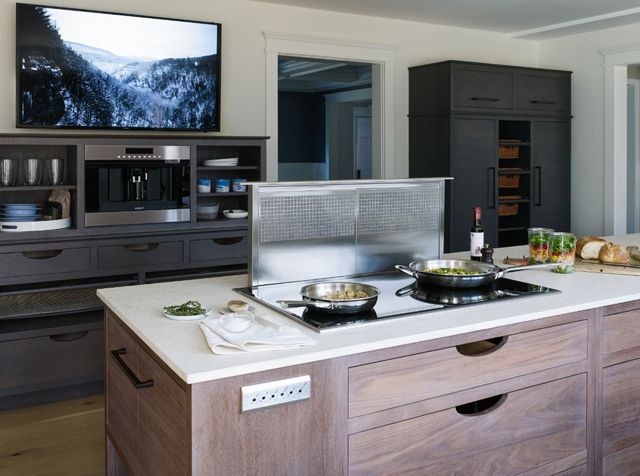
At a Glance:
Why an Induction Cooktop Needs Ventilation
Ways to Vent an Induction Cooktop
How to Choose Ventilation for My Induction Cooktop
Ventilation to Pair with Your Induction Cooktop
Induction cooktops are gaining in popularity because of their energy efficiency, temperature precision, and easy-to-clean, sleek surface. But then there is the question: Do these modern cooktops need ventilation and if so, what kind of ventilation system is suitable?
In this article, we will look at the factors that make proper ventilation an essential element for induction cooktops and will also discuss different venting options. We'll be providing CFM (cubic feet per minute) recommendations and will also highlight some of the top-rated induction cooktops and range hoods. Read on to make sure that you have all the necessary kitchen appliances for proper and safe induction cooking.
Explore Ventilation at Fuse Specialty Appliances
Looking for a range hood to pair with your induction cooktop? Explore ventilation from top brands like XO, Broan, Vent-a-Hood, and more at Fuse Specialty Appliances, today!
Shop VentilationSign Up for Our Newsletter
Be the first to learn about our premium appliances and special offers. We promise to keep your information private.
Do Induction Cooktops Need a Vent? Yes!
Having sufficient ventilation is the primary factor of any efficient kitchen, regardless of whether you use a gas, electric, or induction cooktop.
Whilst the induction cooktops are popular for their energy efficiency and their cool-to-the-touch surfaces, in the end they still produce heat and cooking emissions that need to be properly vented out of the kitchen. In this section, we will explore the importance of ventilation for induction cooktops and the different venting options now available.
Explore Induction Cooktops
Why an Induction Cooktop Needs Ventilation
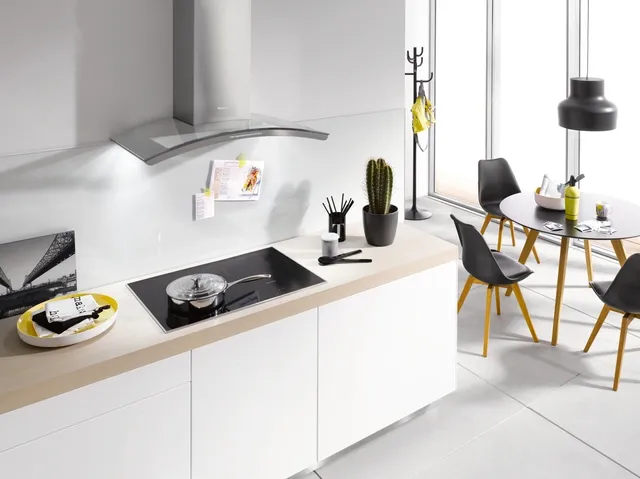
Even though induction cooktops are invented to be highly energy-saving and much safer than gas or electric cooktops, they still release heat and cooking fumes which can lead to quick accumulation in your kitchen space in case of poor ventilation.
Here are a few key reasons why ventilation is crucial for induction cooktops:
✅ Removal of Heat and Steam: Even though the induction cooktop is less than the gas or electric cooktop in producing heat in the environment, it also produces heat during cooking. This heat, together with the steam emitted from the cooking also has some quick effects on your kitchen, making it uncomfortable and stuffy if the air is not removed.
✅ Elimination of Cooking Odors: The induction cooktops do not give out as many odors as the gas cooktops, but they can still emit the odors of the food and smoke during the cooking process. It is imperative to have sufficient ventilation in the kitchen because if not, the odors can stay in your kitchen and can spread in your entire home.
✅ Improved Indoor Air Quality: Heating the air gives rise to the formation of various airborne particles, such as grease, smoke, and other pollutants. Proper ventilation actually does remove these contaminants from the air, consequently improving indoor air quality and reducing the risk of respiratory issues.
✅ Prevent Condensation and Mold: When there is no proper ventilation and heat and moisture are left to accumulate, condensation is bound to form on walls, cabinets, and other surfaces. This condensation, over time, may give rise to the development of mold and mildew which can be bad for your health and will eventually lead to damage in the kitchen.
Ways to Vent an Induction Cooktop
There are several options available for venting an induction cooktop, each with its own advantages and considerations:
- Range Hoods: Among the different ways that is often used to exhaust an induction cooktop is by mounting a range hood above the cooktop. Range hoods can be used to extract heat, steam, smoke, and odors from the cooking area, which helps to make the kitchen more comfortable to work in. They may be vented out in some cases or, in some other cases, if they are recirculated back to the kitchen with appropriate filtration.
- Downdraft Cooktops: Some induction cooktops are provided with the ventilation system built in the bottom, or the option for one to be added. Such cooktops have an air outlet, which is situated either behind or next to the cooking surface, and it sucks the air downward and away from the cooking area. induction cooktop with downdraft are a good solution for kitchens where a range hood cannot be installed or in case the range hood is not wanted.
- Downdraft Ranges: As with downdraft induction cooktop, downdraft ranges have a built-in ventilation system which sucks air down and away from the cooking area. These are especially a good tool for the kitchens with open concepts or layouts where it is hard to place a traditional kitchen hood.
Induction cooktops are definitely one of the most efficient appliances, and they produce less ambient heat than traditional cooktops do. However, they do not require special ventilation systems or cooling fans like the other cooktops do.
→ Learn more: Custom Range Hood Buying Guide
How to Choose Ventilation for My Induction Cooktop
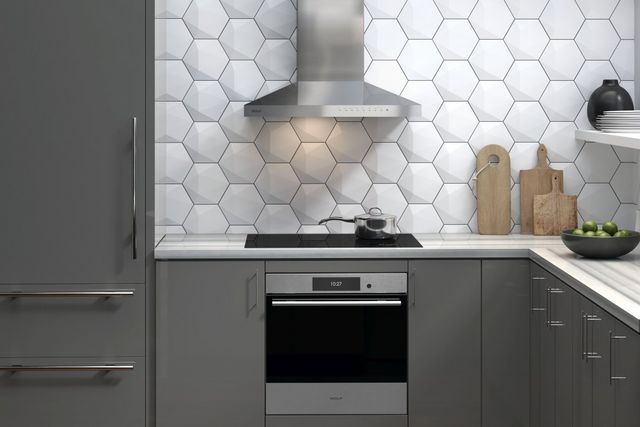
Among the most significant considerations while choosing a ventilation system for your induction cooktops is the CFM (cubic feet per minute) rating. CFM rating is the airflow rate per minute of a ventilation system, and it is dependent on both the size and power of your cooking appliance.
➥ 100 CFM for every 12 inches of cooktop width.
➥ 100 CFM per 10,000 BTUs for heat capacity.
For instance, when you have a 36-inch induction cooktop with an overall output of BTU 45,000, you will need a ventilation system with a minimum CFM rating of 750 (300 CFM for the 36-inch width and 450 CFM for the 45,000 BTU output).
As well, the height of mounting your ventilation system should be considered. If your range hood or downdraft vent is installed more than 3 feet above your cooking surface you may need a higher CFM to handle cooking emissions.
Ventilation to Pair with Your Induction Cooktop
Now that you understand the importance of proper ventilation for induction cooktops and how to determine the ideal CFM rating, let's take a look at some top-rated induction cooktop and range hood pairings:
Thermador® Liberty® 36" Induction Cooktop + Miele Puristic Edition 6000 36" Stainless Steel Wall Hood

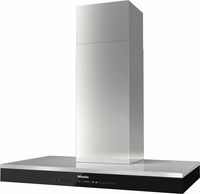
The Thermador Liberty 36" Induction Cooktop is a futuristic and powerful cooktop with five induction elements, which are equipped with a triple element to be able to cook with larger pots and pans. This cooktop is capable of delivering 11,600 watts of power, so it is imperative that a ventilation system with a minimum CFM rating of 600 should be installed.
Shop this Thermador Induction Cooktop
The Miele Puristic Edition 6000 36" Wall Hood is an awesome fit, it provides 600 CFM of airflow and has a sleek, modern design that matches with the Thermador induction cooktop. The use of this combination will achieve the task of removing the heat, steam, and cooking emissions effectively and, at the same time, help your kitchen look smart and upscale.
→ Learn more: Thermador Induction Cooktop Review
Monogram® 36" Induction Cooktop + Monogram® Statement Collection 36" Stainless Steel Wall Mounted Range Hood
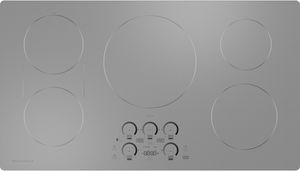
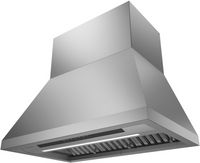
The Monogram 36" Induction Cooktop is a versatile and powerful appliance that has five induction elements consisting of an 11-inch triple element as well as a power booster for faster heat-up. The cooktop of 9,600 total watts needs a ventilation system with a CFM rating of 500 as a minimum.
Shop this Monogram Induction Cooktop
The Monogram 36" wall mount range hood provides 610 CFM of airflow and will match the Monogram induction cooktop in a white design that blends in nicely with the rest of your kitchen décor. While made for ventilation, this Monogram range hood provides a uniform look with the induction cooktop.
Kitchen Suite 36" Black Glass Induction Cooktop + XO Fabriano Collection 48" Stainless Steel Wall Mounted Range Hood
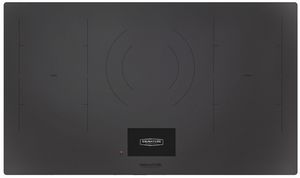

The Signature Kitchen Suite 36" Black Glass Induction Cooktop is a stylish and feature-packed option with five induction elements, including two flexible cooking zones that can accommodate various pan sizes and shapes.
Shop this Signature Kitchen Suite Induction Cooktop
With a total of 11,500 watts of power, this cooktop requires a ventilation system with a minimum CFM rating of 800. The XO Fabriano Collection 48" Wall Mounted Range Hood is an excellent pairing, offering a powerful 1000 CFM of airflow and a stylish stainless steel design that complements the signature kitchen suite induction cooktop. This combination ensures exceptional ventilation while maintaining a cohesive, high-end aesthetic in your kitchen.
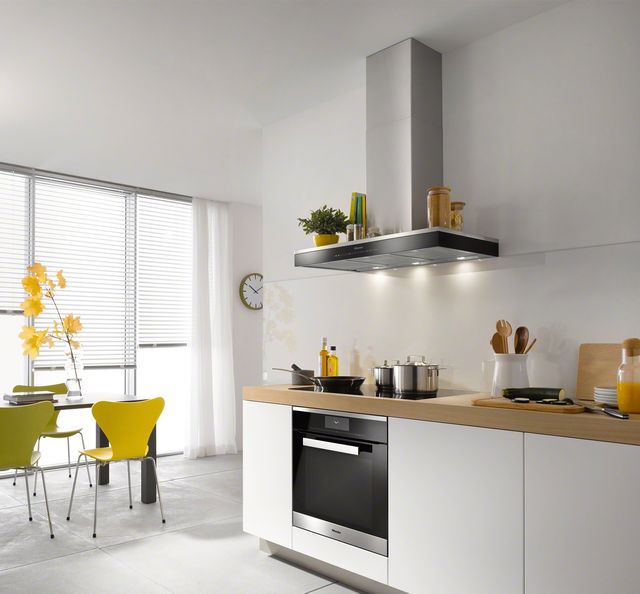
When shopping for range hoods, it's essential to consider the size and CFM rating required for your cooktop, as well as the style and design that complements your kitchen aesthetic.
While this blog post provides a comprehensive overview of why induction cooktops need ventilation and how to choose the right venting solution, it's always a good idea to consult with appliance experts to ensure you select the best induction cooktop and configurations for your specific needs and kitchen layout.
FAQ
Is 350 CFM good for a range hood?
A range hood with a 350 CFM rating can be adequate for smaller cooktops or kitchens with lower ventilation requirements. However, for most standard-sized induction cooktops (30-36 inches wide), a range hood with a minimum of 500-600 CFM is recommended for optimal ventilation.
Do you need special pots for induction cooktops?
Yes, induction cooktops require special pots and pans made of ferromagnetic materials, such as cast iron or magnetic stainless steel. These materials allow the magnetic field generated by the induction cooktop to transfer energy and heat the cookware directly.
What is the difference between electric and induction cooktops?
Electric cooktops use traditional radiant heating elements that heat up and transfer heat to the cookware through thermal conduction. Induction cooktops, on the other hand, use electromagnetic fields to directly heat the ferromagnetic cookware placed on the surface, making them more energy-efficient and precise in temperature control.
In terms of ventilation, both electric and induction cooktops generate heat and cooking emissions that require proper ventilation. However, induction cooktops generally produce less ambient heat than electric cooktops, as the surface itself doesn't get as hot.
Where to buy an induction cooktop near me?
Induction cooktops are widely available at Fuse Specialty Appliances. It's always a good idea to visit showrooms in person to compare models, features, and get expert advice from knowledgeable sales staff.
Why Trust Fuse Specialty Appliances?
Fuse Specialty Appliances carries an incredible selection of premium and high-end appliances for your home. With over 30 years of appliance knowledge, our team of experts represents the best and brightest in the industry. Our teams bring decades of experience working with designers, architects, cabinet makers, contractors, and everyone who is involved in designing and building a dream kitchen. We provide our customers with a unique, boutique-style experience where we get to know your goals for your kitchen. This more connected dynamic helps us ensure that we help you realize your kitchen dreams.
Shop Induction Cooktops at Fuse Specialty Appliances
Visit one of our South Florida locations to see what a difference shopping locally with an experienced staff can make. Or shop induction cooktops and range hoods online! Our friendly experts are always happy to help you choose a range hood for your induction cooktop — whether you call us, use our online chat feature, or visit us in person.
→ Learn more: Custom Range Hood Buying Guide
